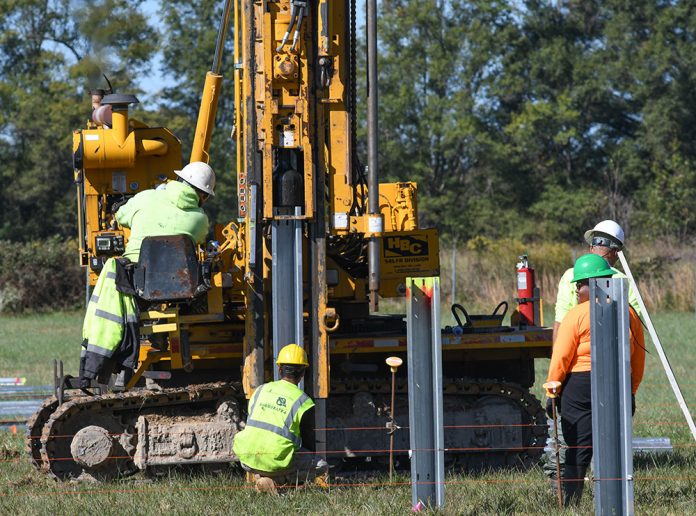By Stan Welch
Construction has begun on one of five solar farms to be located in the county. The site is on Highway 8, between the New Hope ballfields and Highway 29.
The majority of the proposed sites are in northern Anderson County, including the Piedmont area.
The owners and operators of those proposed installations, Southern Current, currently have one hundred similar projects under development in South Carolina, while sixteen projects are actually under construction.
The facilities will capture and convert solar power to electricity, and feed it into the transmission system of the utility accepting and purchasing the energy. Ford Graham, an attorney for K & L Gates, the law firm representing Southern Currents, specializes in economic development. “The company I represent does work all over the country, but is located in Charleston. They do projects designed to produce from two megawatts of power to one hundred megawatts, depending on the demands of the utility, the size of the facilities and the amount of dependable sun days in a given location.”
A two megawatt producer, for reference, would require a two or three million dollar investment. The energy is transmitted through the utilities transmission lines to a substation where it flows into the grid. The arrangement, explained Graham, is commonly a long term contract, with the company guaranteeing a certain flow of energy over the course of a thirty year contract. In return the utility agrees to a certain amount to purchase the energy.
The role that the county, Anderson in this case, plays is providing predictable economic incentives, such as tax credits and other considerations, explained Graham, who spent a decade working for the state of South Carolina as a recruiter of industries. It was during that time that he and Burriss Nelson, Anderson County economic development director, became friends. Graham was a part of the team that brought First Quality to Anderson County.
Graham describes the facilities as very passive, requiring little if any, additional infrastructure. He also concedes that the majority of jobs produced by the facilities are construction jobs. “Once they are up and running, the need for maintenance and repair is minor, and intermittent. Most of the panels are stationary, though some facilities are geared to track the sun as it moves across the sky.”
He stressed that, without the participation of the county, the projects would not come to pass. “The main benefit to the county is that many acres of agricultural land, that produces very minimal tax revenue, will generate tens of thousands of dollars each year once they are converted to solar production.”
Graham says that solar is an idea whose time is here. “For many years, in the South, energy was so cheap to produce, with nuclear and coal driven plants, that solar wasn’t really a viable option. But that is rapidly changing, and the Sun Belt, from the southeast to the southwest, is poised to take advantage of that change. Anderson County is to be commended for being on the cutting edge of what promises to be major changes in the energy field.”

















